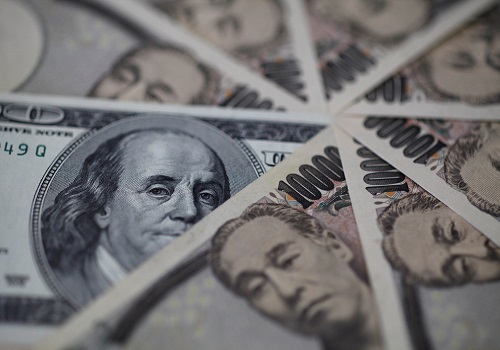Dollar eases, upbeat China PMI revives risk sentiment

Follow us Now on Telegram ! Get daily 10 - 12 important updates on Business, Finance and Investment. Join our Telegram Channel
The dollar wobbled on Wednesday after China's manufacturing activity expanded at its fastest pace since April 2012 and exceeded forecasts, sparking some risk-on appetite that sent the safe-haven dollar lower.
The yuan and the Australian dollar got a leg up from the upbeat Chinese economic data, which showed that the official manufacturing purchasing managers' index (PMI) stood at 52.6 last month against 50.1 in January.
Similarly, China's non-manufacturing activity grew at a faster pace in February, official data showed, while the Caixin/S&P Global manufacturing PMI reading for last month likewise surpassed market expectations.
The onshore yuan rose and was last roughly 0.1% higher at 6.9250 per dollar, while the offshore yuan gained a larger 0.26% to 6.9371 per dollar.
"The strong set of China PMIs breathed some life into the China reopening trade," said Christopher Wong, a currency strategist at OCBC.
The Aussie, which slid to a two-month low earlier on Wednesday following soft domestic economic data, also reversed its losses following the Chinese surveys, and was last 0.07% higher at $0.6733.
The Australian dollar is often used as a liquid proxy for the yuan.
Australia's economy grew at the weakest pace in a year last quarter while the country's monthly consumer prices rose less than expected in January, separate data showed on Wednesday, which could make the case for a slower pace of rate hikes by the Reserve Bank of Australia.
"I think market participants will pay a close look to the January CPI indicator in order to gauge the near-term outlook for RBA policy," said Carol Kong, a currency strategist at Commonwealth Bank of Australia (CBA).
"But given what the RBA said at the last meeting, they seem to have already made up their minds and want to further raise interest rates."
Across the board, the U.S. dollar edged lower on Wednesday as markets cheered the revival of activity in the world's second-largest economy following China's exit from its stringent COVID policies late last year.
That raised hopes of a more subdued downturn in the global economy in the wake of aggressive interest rate hikes by major central banks.
The euro rose 0.09% to $1.0586, recouping some of its losses from the previous session.
Inflation in two of the euro zone's biggest economies rose unexpectedly in February, data showed on Tuesday, pushing up rate hike expectations by the European Central Bank (ECB).
"While still-high U.S. inflation augurs more Fed tightening, euro area inflation is higher and stickier in 2023, and the ECB has more tightening to do than the Fed," said Thierry Wizman, Macquarie's global FX and rates strategist.
Sterling edged 0.12% higher to $1.2032, having surged 1% at the start of the week after Britain struck a post-Brexit Northern Ireland trade deal with the European Union.
British Prime Minister Rishi Sunak was in Northern Ireland and then met with his own lawmakers on Tuesday to sell the new deal.
Against a basket of currencies, the U.S. dollar index fell 0.07% to 104.91.
It had risen nearly 3% in February, its first monthly gain after a four-month losing streak, as a slew of strong U.S. economic data in recent weeks raised market expectations that the Federal Reserve has further to go in hiking rates.
Futures pricing currently suggests a peak of around 5.4% in the Fed funds rate by September.
"We see the Fed going to 5.5%, with a growing risk of 6%," said Michael Every, global strategist at Rabobank. "The Fed is hiking. Others can't follow or match. The dollar will soar."
Elsewhere, the dollar rose 0.06% against the Japanese yen to 136.31, after having spiked close to 5% against the yen in February, its largest monthly gain since last June.
The kiwi gained 0.17% to $0.6195.












 320-x-100_uti_gold.jpg" alt="Advertisement">
320-x-100_uti_gold.jpg" alt="Advertisement">











